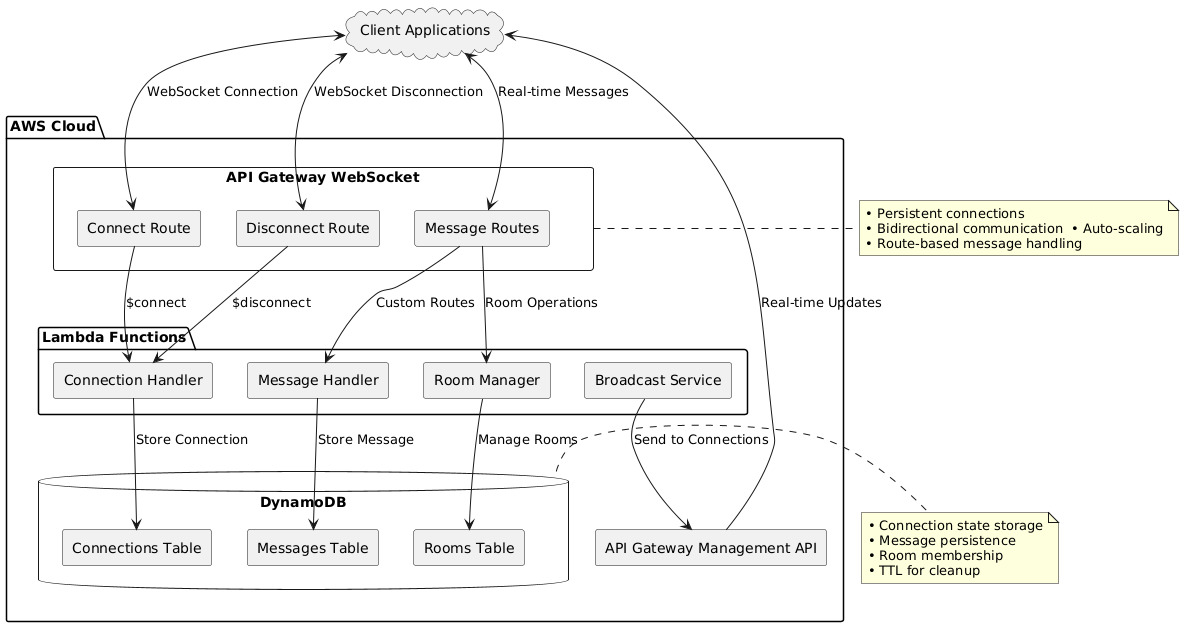Building modern applications often requires the ability to perform full-text searches with fuzzy matching capabilities on data that’s primarily stored in NoSQL databases like DynamoDB. While DynamoDB excels at fast key-based lookups and can handle massive scale, it lacks the sophisticated search capabilities that applications need for features like autocomplete, typo-tolerant search, and complex text analysis. OpenSearch (the open-source fork of Elasticsearch) provides these advanced search capabilities, but keeping it synchronized with your primary data store presents unique challenges.
Modern applications increasingly demand real-time capabilities—from live chat systems and collaborative editing to real-time dashboards and gaming. In this final post of our AWS and TypeScript series, we’ll explore how to build scalable real-time applications using AWS API Gateway WebSocket APIs, Lambda functions, and TypeScript to create robust, type-safe real-time communication systems.
Understanding WebSocket APIs with AWS
AWS API Gateway WebSocket APIs provide a fully managed service for building real-time, bidirectional communication applications. Key advantages include:
Real-time processing architectures address the fundamental challenge of extracting actionable insights from continuously flowing data streams while maintaining low latency and high throughput requirements. Unlike batch processing systems that operate on static datasets with relaxed timing constraints, real-time systems must process events as they arrive, often within milliseconds or seconds of generation. This temporal sensitivity introduces unique design considerations around event ordering, backpressure handling, and state management that distinguish real-time architectures from their batch-oriented counterparts.
